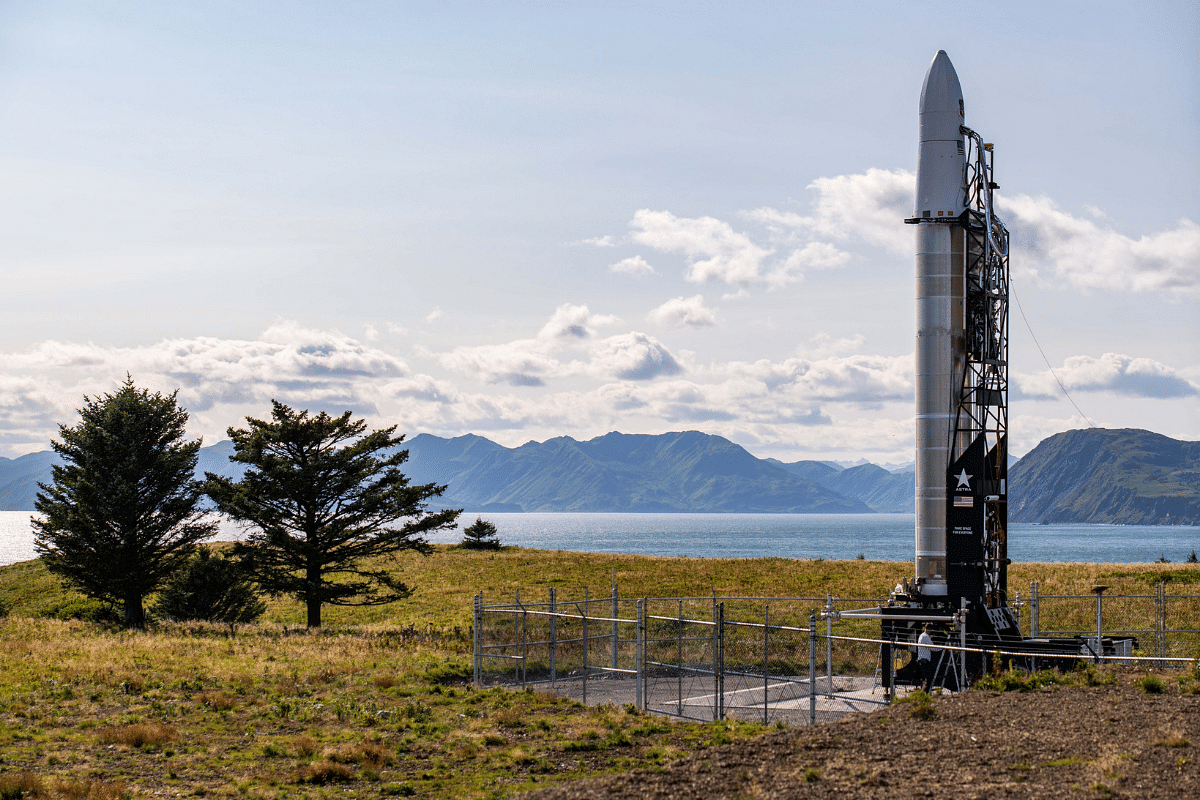Science
Astra’s First Commercial Orbital Launch With US Space Force Failed To Reach Space
- Astra Space's test launch for the United States military falls short.

Astra Space launch vehicle LV0006, also known as Rocket 3.3 (Photo: Astra/Twitter)
American launch vehicle company Astra Space attempted to send its “LV0006” rocket to orbit as part of a test launch, but has fallen short of its goal.
After delays, the launch vehicle lifted off from the Pacific Spaceport Complex in Kodiak, Alaska, at 3:35 PM Pacific Time on 28 August (4 AM Indian Standard Time, 29 August) to a troubled start.
The flight was eventually terminated two and a half minutes after launch. The rocket went up to about a 50 km altitude before heading back down safely.
The altitude of the target orbit was 415 km.
It was Astra’s first commercial orbital launch with the United States (US) Space Force. The failed mission was carrying a non-deployable Space Force payload.
The US Space Force is the newest branch of the Armed Forces, established 20 December 2019.
Astra founder, chairman, and chief executive officer Chris Kemp said they “were unable to accomplish all mission objectives for the U.S. Space Force,” but they collected a lot of data from the test flight.
Astra’s main goals for the LV0006 launch were to show that they can deliver a test payload to an appropriate orbit, and gather data on the performance of the system in flight.
“We will incorporate learnings from this test into future launch vehicles, including LV0007, which is currently in production,” Kemp said after the mission.
Astra said they have opened an investigation into the mishap and are working closely with the US Federal Aviation Administration.
Astra’s Rocket 3.3 is an expendable, vertically launched two-stage liquid oxygen (LOX)/kerosene rocket. Its first stage is powered by five electric-pump-fed engines and the upper stage by a single pressure-fed Aether engine.
In building rockets, Astra’s main priority is scale. “In many ways, the engineering that goes into a car is more than what goes into a rocket. But they’re able to make cars for tens of thousands of dollars. You don’t find any rockets today that are that affordable,” founder and chief technology officer Dr Adam London said in an in-house Astra interview.
Astra’s mission is to improve life on Earth from space. “To us, improving Earth means enabling humanity to use this very valuable real estate right above the surface of the planet to make life on Earth better. Our job is to make that as easy as possible,” he said.
In introducing Astra in February 2020, Kemp had said, “Rather than return man to the moon or aspire to reach Mars, our vision is to make rocket launches to low Earth orbit so frequent, routine and automated, that they’re almost – dare we say it – boring.”
Astra was founded in October 2016. About a couple of years later, in 2018, they launched Rocket 1.0 and Rocket 2.0 from Kodiak, Alaska. In September last year, they completed their first orbital launch demonstration with Rocket 3.1 and soon after, in December, sent Rocket 3.2 to space. Astra’s first flight to space was within just four years of its inception.
In July this year, the company went public.
The latest milestone for Astra was the launch of Rocket 3.3. The launch was originally intended to take place on 28 August, but a problem emerged that pushed the launch to a day later.
The liftoff was successful the next day, but unfortunately, it wasn’t all of the success the space company would have hoped for. Nevertheless, the data from the test flight will likely guide Astra’s future rocket development.
Astra's next launch vehicle, LV0007, is in production.
Astra Space shares reportedly dropped 24 per cent Monday after the weekend test launch fell short.
Astra will be launching later this year on a second mission booked by the US Space Force.
Introducing ElectionsHQ + 50 Ground Reports Project
The 2024 elections might seem easy to guess, but there are some important questions that shouldn't be missed.
Do freebies still sway voters? Do people prioritise infrastructure when voting? How will Punjab vote?
The answers to these questions provide great insights into where we, as a country, are headed in the years to come.
Swarajya is starting a project with an aim to do 50 solid ground stories and a smart commentary service on WhatsApp, a one-of-a-kind. We'd love your support during this election season.
Click below to contribute.
Latest